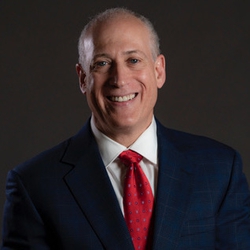We are born with two ears and one mouth for a reason – we need to listen twice as much as we speak! The best doctors, salesman, attorneys, etc. are those who listen the best. Listening is not as easy as it seems, though. We, as doctors, want to cut to the chase and find out what is exactly the patient’s main problem. We do not want to hear what happened 15 years ago. So we interrupt, and try to get the patient back on track.
The information we receive is based on the questions we ask. Just like a computer, garbage in, garbage out. However, when we interrupt, we appear to be acting rudely to the patient. Studies have shown that about 75% of what we hear is heard incorrectly. When we interrupt or when we are not fully present, we miss clues that the patient is giving us. We miss the importance of their visit and we definitely miss the tone and facial expressions from the patient. It is not what they say, but also how they say it which gives us an idea of how we need to handle their problem.
Remember, I said you interrupted to cut to the chase of why the patient came in. Well, ironically, it did not save you time. In matter of fact, it cost you time. When you interrupt, you do not get the full meaning of what the patient is saying. This is when mistakes can happen, or more commonly, you don’t address the issue. So, what happens next? The patient calls to speak to you. Now you have to interrupt your day to call the patient back and spend extra time on the phone to actually listen to the patient. By not listening with intent, you will probably lose the patient to another doctor.
Here are some tips of how to listen better:
- Stop talking. This is pretty obvious but you might want to remind yourself to slow down and listen.
- Watch the patient’s body language. Is their body language telling you they are nervous, angry or upset? Note their posture, facial expressions, gestures, movements and eye contact. Ask the patient if something is bothering them. Let them know you are here to help, so they should not be embarrassed to tell you the truth.
- If you have to enter information into the computer and cannot make direct eye contact, tell the patient what you are doing and that after you enter their information you will give them your undivided attention.
- If the patient is sitting down, which they usually are, you should be sitting, in order to give them direct eye contact.
- Don’t be cold. Tell the patient you understand their situation. Show empathy.
- Repeat what they have told you. This is the best way to make sure you understand the patient’s main issue and for the patient to see that you were truly listening.
- Be patient. Don’t assume you know what the patient is going to say.
- Look for areas of agreement. In order to communicate properly, you need to agree on something. If you continually disagree with the patient, then the patient will probably not return. You can say something like, “I understand Ms. Jones. If I was in your shoes, I would totally feel the same way.” This does not mean you are agreeing to something that is totally false. You are just saying you can see how they came to that conclusion.
- Ask better questions. Ask questions to get the answers you are seeking.
Listening will make you a better doctor, make the patient feel at ease, and save you time. In addition, listening increases the likelihood the patient will refer another friend or family member.
To learn more about the Top Practices Virtual Practice Management Institute and how it can help you manage your medical practice more efficiently, contact us by calling (717) 725-2679 or emailing [email protected].